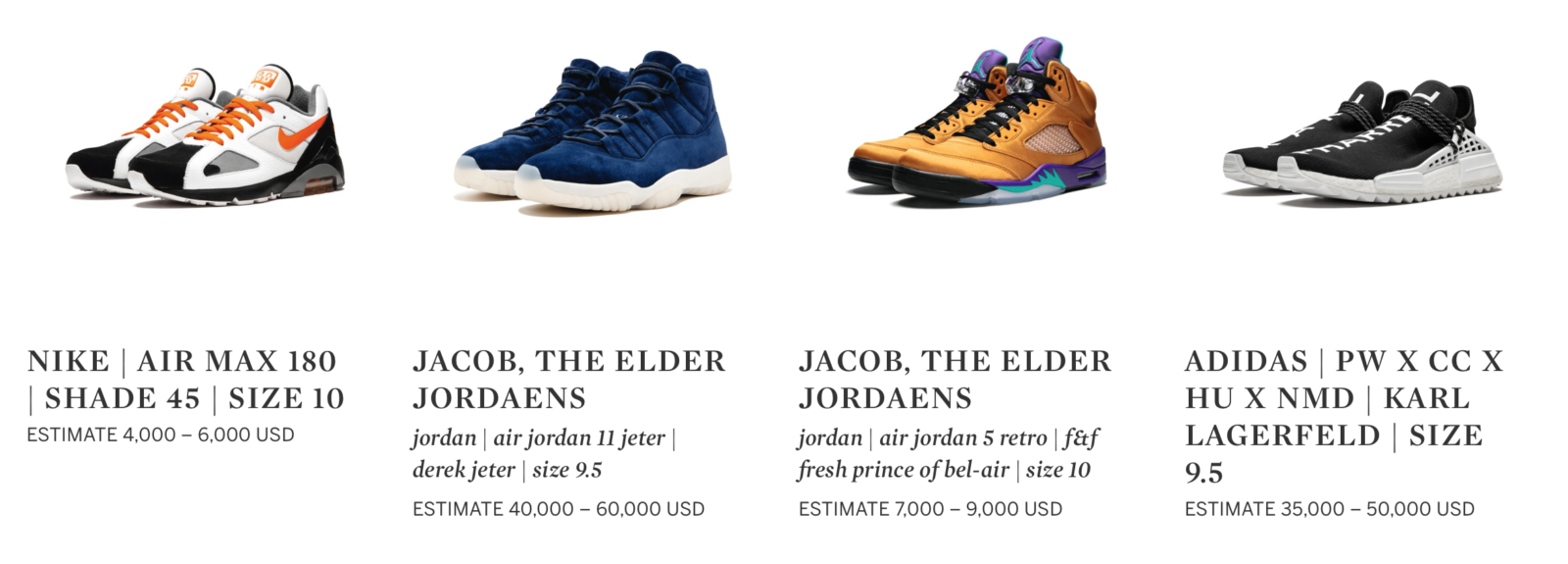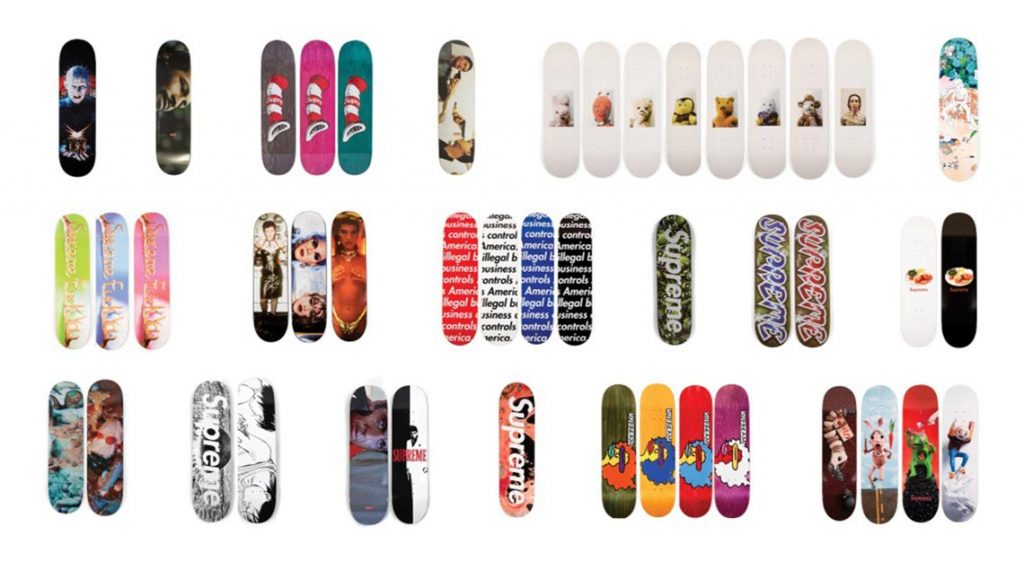Move over Monet. One of the world’s oldest auction houses is putting the arts of ancient China and the “monumental works” of the 1980s on the back burner for a moment and offering up “100 of the Rarest Sneakers Ever Produced.” In collaboration with Stadium Goods, the FarFetch-owned premium sneaker and streetwear marketplace, Sotheby’s is hosting an auction of footwear ranging from two pairs of Nike Mag sneakers inspired by Marty McFly’s kicks in Back to the Future Part II to “the auction’s crown jewel,” the unworn pair of handmade Nike “Moon Shoe” circa 1972, which were designed by Nike co-founder and Oregon University track coach Bill Bowerman.
The impending auction, which the 275-year old, New York-headquartered Sotheby’s, calls “the first of its kind,” boasts a range of shoes, including Kanye West’s Yeezy Boost 350s, which are expected to sell for between $7,000 and $9,000, and Off-White x Nike Limited AF1s, which Sotheby’s expects to go for between $11,000 and $16,000, as well as Air Jordan 11 Jeters – which comes with an estimated auction price of between $40,000 and $60,000, and the Nike Waffle Racing Flat, which will likely set a buyer back between $110,000 and $160,000.
The rare sneakers auction is part of a larger effort by auction houses to remain relevant in the modern market and court the next generation of collectors. As Architectural Digest noted last year, “Across the major auction houses, most have plans in place to cultivate a younger demographic.” This has seen auction houses, such as Christie’s, hosting cocktail hours on weekends to order to draw in a younger, hipper crowd, and others, including Freeman’s in Philadelphia, hosting auctions with pieces at more accessible entry prices.
Sotheby’s, in particular, has looked to engage new – read: younger – consumers. “We are really focusing on Weibo and WeChat right now, particularly growing our Chinese audience,” Sotheby’s director of digital marketing and strategy, Noah Wunsch, said. And thanks to the company’s growing presence on multiple platforms, it is seeing significant uptick in new buyer engagement, while remaining cognizant of the legacy of the Sotheby’s name and the risk of “alienating its older, engaged clients.”
 image: Sotheby’s
image: Sotheby’s
All the while, with its rare sneaker auction and its recent offering of “the only privately owned collection of every Supreme skate deck ever manufactured,” including the three that led to a legal scuffle between the famed streetwear and Louis Vuitton back in 2000, Sotheby’s joins the likes of houses that are looking to inherently “cooler” offerings than impressionist artworks and rare books.
French auction house Arterial, for example, made headlines when it staged an auction last spring entitled, C.R.E.A.M. (Cash Rules Everything Around Me), a nod to rap group Wu-Tang Clan’s 1993 single. The auction’s 145 lots – which were available by way of the house’s Paris headquarters and simultaneously online – consisted almost exclusively of limited-edition and hard-to-get goods from New York-based cult streetwear brand, Supreme.
Arterial’s entire Supreme auction brought in a bit more than $1 million, which is less than $15 million less than what Pablo Picasso’s singleYoung Girl with a Flower Basket (Fillette à la Corbeille Fleurie) sold for last year. While Nike sneakers and Supreme skate decks might make up just a tiny fraction of the $11.21 billion global art auction market, many of the buyers interested in these items are the future.
In April, The KAWS Album (2005), a painting by KAWS, the New Jersey-born graffiti artist-turned fine artist named Brian Donnelly, sold for HK$115.9 million ($14.82 million) at Sotheby’s Hong Kong, breezing past the pre-sale estimate of HK$8 million ($1.02 million). The sale, which set a record price for the artist, “seems to be a harbinger for something to come,” Betsy Bickar, a vice president and art advisor at Citi Private Bank, told Barrons, speaking particularly of an emerging audience of younger collectors.
“If younger buyers are demanding a more holistic and inclusive approach to luxury, the market will eventually respond,” writer and art historian Osei Bonsu told Hypebeast this spring. And that seems to be exactly what is underway as we speak.











